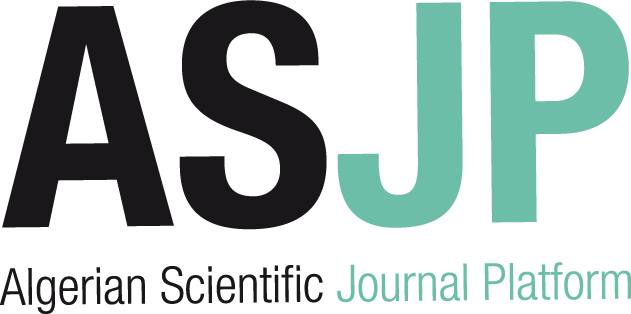Détail de l'auteur
Auteur Andrew Rowe |
Documents disponibles écrits par cet auteur (2)


 Ajouter le résultat dans votre panier Faire une suggestion Affiner la recherche
Ajouter le résultat dans votre panier Faire une suggestion Affiner la recherchePerformance modeling of AMR refrigerators / Thomas Burdyny in International journal of refrigeration, Vol. 37 N° 1 (Janvier 2014)

Titre : Performance modeling of AMR refrigerators Titre original : Modélisation de la performance de réfrigérateurs à régénérateurs magnétiques actifs Type de document : texte imprimé Auteurs : Thomas Burdyny, Auteur ; Alex Ruebsaat-Trott, Auteur ; Andrew Rowe, Auteur Année de publication : 2014 Article en page(s) : pp. 51-62 Note générale : Refrigeration Langues : Anglais (eng) Mots-clés : AMR cycle thermodynamics magnetocaloric effect magnetic refrigeration Résumé : A system modeling approach for predicting the performance of active magnetic regenerators using a one-phase approximation is presented. The approach is described for an arbitrary AMR device independent of the magnetic refrigerant, thermal losses or magnetic waveform. A general expression for magnetic work is derived which can be used for cycles where the low-field intensity is not zero. Additionally, a means of treating the varying magnetic field waveform as a single high and low field is described. The model is applied to a permanent magnet magnetic refrigerator using water–glycol as the heat transfer fluid. Simulated results are compared to experimental data which vary by heat load, frequency and utilization. A sensitivity analysis is performed using utilization, adiabatic temperature change, effective conductivity and particle size as independent variables. Comparisons to experimental data show that reducing the calculated magnetocaloric effect by 25% provides good agreement between simulations and experimental results. En ligne : http://www.sciencedirect.com/science/article/pii/S0140700713002119
in International journal of refrigeration > Vol. 37 N° 1 (Janvier 2014) . - pp. 51-62[article] Performance modeling of AMR refrigerators = Modélisation de la performance de réfrigérateurs à régénérateurs magnétiques actifs [texte imprimé] / Thomas Burdyny, Auteur ; Alex Ruebsaat-Trott, Auteur ; Andrew Rowe, Auteur . - 2014 . - pp. 51-62.
Refrigeration
Langues : Anglais (eng)
in International journal of refrigeration > Vol. 37 N° 1 (Janvier 2014) . - pp. 51-62
Mots-clés : AMR cycle thermodynamics magnetocaloric effect magnetic refrigeration Résumé : A system modeling approach for predicting the performance of active magnetic regenerators using a one-phase approximation is presented. The approach is described for an arbitrary AMR device independent of the magnetic refrigerant, thermal losses or magnetic waveform. A general expression for magnetic work is derived which can be used for cycles where the low-field intensity is not zero. Additionally, a means of treating the varying magnetic field waveform as a single high and low field is described. The model is applied to a permanent magnet magnetic refrigerator using water–glycol as the heat transfer fluid. Simulated results are compared to experimental data which vary by heat load, frequency and utilization. A sensitivity analysis is performed using utilization, adiabatic temperature change, effective conductivity and particle size as independent variables. Comparisons to experimental data show that reducing the calculated magnetocaloric effect by 25% provides good agreement between simulations and experimental results. En ligne : http://www.sciencedirect.com/science/article/pii/S0140700713002119 Exemplaires
Code-barres Cote Support Localisation Section Disponibilité aucun exemplaire Simplified modeling of active magnetic regenerators / Thomas Burdyny in International journal of refrigeration, Vol. 36 N° 3 (Mai 2013)

Titre : Simplified modeling of active magnetic regenerators Titre original : Modélisation simplifiée des régénérateurs magnétiques actifs Type de document : texte imprimé Auteurs : Thomas Burdyny, Auteur ; Andrew Rowe, Auteur Année de publication : 2013 Article en page(s) : pp. 932–940 Note générale : Refrigeration Langues : Anglais (eng) Mots-clés : Active magnetic refrigerator cycle Thermodynamics Magnetocaloric effect Magnetic refrigeration Résumé : A simplified model for predicting the general trends of active magnetic regenerator devices is presented. To reduce computational demands it is assumed the regenerator has sufficiently high convective interaction such that a one-phase regenerator approximation is sufficient. A corrective term is subsequently added to the thermal conductivity to account for the convective heat leak. Losses internal and external to the regenerator are also defined for a generalized AMR device. The steady state temperature span across the regenerator is then evaluated using an energy balance and real material properties with the cooling capacity, work inputs and COP post-calculated using the result. A comparison of the simplified model with experimental results was performed using single-layer and multilayer regenerators of Gd, Gd0.74Tb0.26 and Gd0.85Er0.15. The model showed good conformity in magnitude and sensitivity in all of the scenarios which varied by heat load, frequency and utilization. En ligne : http://www.sciencedirect.com/science/article/pii/S0140700712002824
in International journal of refrigeration > Vol. 36 N° 3 (Mai 2013) . - pp. 932–940[article] Simplified modeling of active magnetic regenerators = Modélisation simplifiée des régénérateurs magnétiques actifs [texte imprimé] / Thomas Burdyny, Auteur ; Andrew Rowe, Auteur . - 2013 . - pp. 932–940.
Refrigeration
Langues : Anglais (eng)
in International journal of refrigeration > Vol. 36 N° 3 (Mai 2013) . - pp. 932–940
Mots-clés : Active magnetic refrigerator cycle Thermodynamics Magnetocaloric effect Magnetic refrigeration Résumé : A simplified model for predicting the general trends of active magnetic regenerator devices is presented. To reduce computational demands it is assumed the regenerator has sufficiently high convective interaction such that a one-phase regenerator approximation is sufficient. A corrective term is subsequently added to the thermal conductivity to account for the convective heat leak. Losses internal and external to the regenerator are also defined for a generalized AMR device. The steady state temperature span across the regenerator is then evaluated using an energy balance and real material properties with the cooling capacity, work inputs and COP post-calculated using the result. A comparison of the simplified model with experimental results was performed using single-layer and multilayer regenerators of Gd, Gd0.74Tb0.26 and Gd0.85Er0.15. The model showed good conformity in magnitude and sensitivity in all of the scenarios which varied by heat load, frequency and utilization. En ligne : http://www.sciencedirect.com/science/article/pii/S0140700712002824 Exemplaires
Code-barres Cote Support Localisation Section Disponibilité aucun exemplaire










